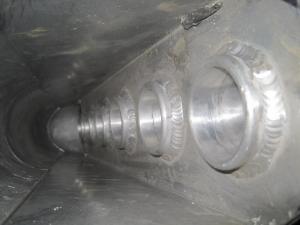When you do finally get to the wiring harness give yourself lots of time, 2days to week depending on how much work it needs.
Lay it out on the floor in the shape it normally is when it's installed. You will want to remove all the wrap so you can check for burn throughs, nicks, previous modifications and connectors that need replacing. I found it very helpful after removing the wrap to bracket with a tie wrap on either side of the harness where a wiring lead left the main harness. You don't need to pull them tight but just enough to mark location where the wires come out so when you are recovering the harness you end up with the same length of wire coming out at the right spot. There is nothing worse then doing a perfect wrapping job, go to install the harness and find it doesn't fit. Then you have do a cut and patch job on the spot or redo all of your work again.
You will be amazed at how much crap can get inside that wrap after 30-40 yrs and it is not uncommon to find 5-6 wires melted together with only microns of plastic insulating them from each other. If part of a 16 gauge wire needs replacing I like to pull the entire length and replace it with 14 ga., same with the lighting harness, I have found it a good practice to up size all of those wires.
Also, before doing the final wrap I have found it useful to add an additional 4-5 wires into the harness that will run from the engine bay into the cab and a few from the cab to the back of the car. Clearly mark them as dormant wires so when in the future you want to add some electrical thingy your wires are already there waiting and you won't have to have jerry-rigged looking wires poking out running across the engine bay.
Chris














